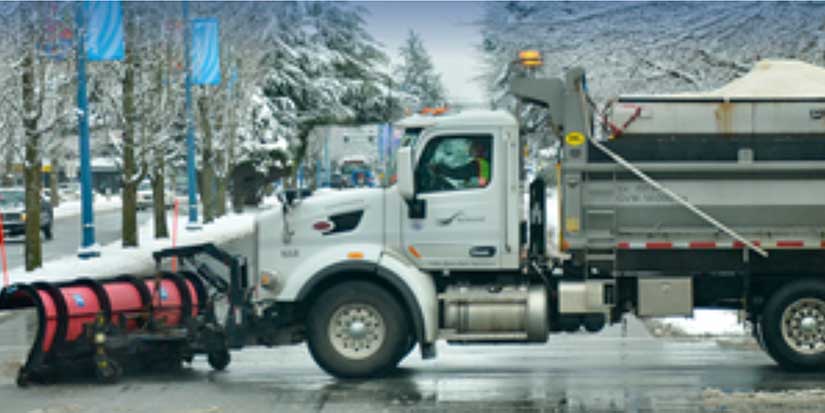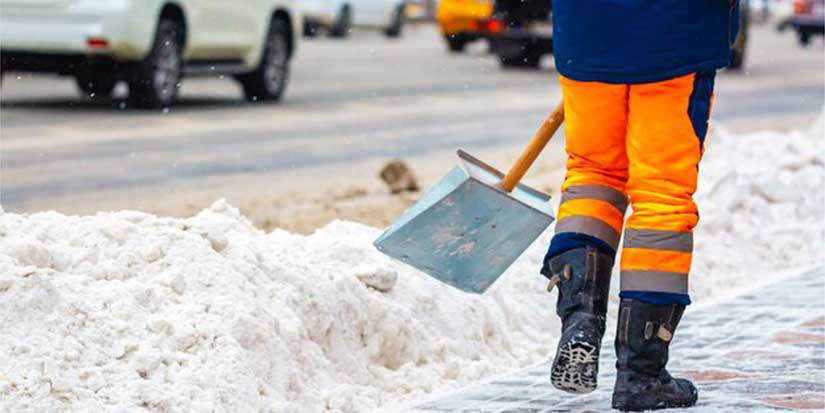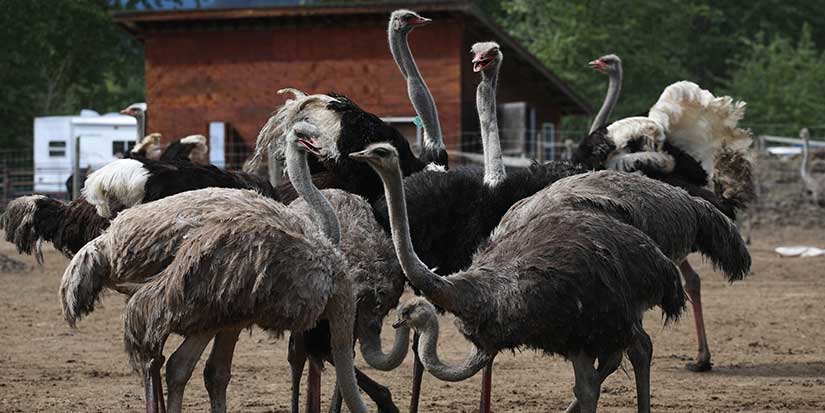Latest News
Richmond prepares for winter storm

Published 3:07 PST, Tue January 16, 2024
Last Updated: 3:08 PST, Tue January 16, 2024
—
As we watch other parts of Canada including British Columbia’s interior and Vancouver Island already challenged by winter storms, winds and high seas, the Richmond Sentinel looked into what the City of Richmond are doing to prepare for the upcoming winter and their suggestions how businesses and residents can help. The following information can be viewed on their website richmond.ca
Get ready for winter—snow removal
The Roads and Construction Department of the Engineering and Public Works Division has the responsibility of maintaining the streets and roads of Richmond in all-weather situations. During the winter months, ice and snow removal requires additional maintenance. During these periods, the department ensures all major roads are cleared and sanded so that emergency vehicles (ambulance, fire trucks and police), public transit and private vehicles are able to travel. The aim is to accomplish this task most cost-effectively while still maintaining a high level of service to the public.
Everything you wanted to know about snow clearing in Richmond
How many trucks does the City of Richmond use?
The city can deploy up to 11 large trucks during a storm event, to clear 316 km of designated routes. During a storm, crews work around the clock, driving, planning and dispatching, and maintaining equipment.
Why is salt used?
Salt is used as the principal de-icer because it is the most readily available and most cost effective. The primary type used is rock salt mined from the earth. When salt is applied to ice and snow, it creates a brine solution that has a lower freezing temperature than the temperature of the surrounding ice. Salt alone becomes ineffective after –6°C and sand is added to the mix.
What are the sanding/salting/plowing priorities?
The city’s primary responsibility is public safety with the first priority for plowing and sanding all major (or "arterials") section line roads and bus routes to facilitate the travel of emergency vehicles and public transportation. The second priority is industrial roadways during business days and main collector roads that run through major subdivisions. Third priority routes include designated collector roads and roads of local significance. As noted in the Snow Response Route Map, third priority routes are only done after first and second priority routes are cleared. Smaller roads in subdivisions are not part of the designated snow clearing routes.
What are the hours of work for the sanding/salting/plowing crews?
During a storm event, crews begin working around the clock in two shifts, sometimes up to 14 hours a day. When a snowfall with significant accumulation is forecast, crews head out early to salt the roads, which helps prevent ice from building up. At the end of a snow event, crews will resume their regular winter schedule:
Mon-Fri: 7:30 a.m. - 4 p.m.
Phone: 604-270-8721
Personnel are on 24-hour standby, 7 days a week.
Get ready for winter—how to prepare your property
• Do you have a good snow shovel by your door? They sell out fast during snow days and Traffic Bylaw 5870 requires residential (single-family and multi-family) owners and occupants, as well as commercial and industrial properties, to remove snow and ice no later than 10:00am daily.
• Shovel snow onto your lawn or a designated parking stall, not the street. Shoveling snow onto the street is a hazard for vehicles and creates more work for snow plows, slowing down the clearing process—it also increases the chance that snow will be pushed back onto your driveway or sidewalk.
• Locate and clean catch basins or storm drains in the roadway in front of your home of debris such as fallen leaves, branches and snow for proper drainage. Take care not to bury these grates or gutters when shoveling snow.
• Clear leaves from your roof’s eaves and ensure appropriate drainage near your house to prevent puddling.
• Secure everything that might be blown around or torn loose—flying objects such as garbage cans and lawn furniture can injure people and damage property.
• Trim dead branches and cut down dead trees to reduce the danger of these falling onto your house during a storm.
• Store a de-icer product and spread it on your walkways after ice forms to give traction; organic and ecologically safe de-icers won’t corrode concrete and are safer for vegetation, pets and children.
• Do not use salt or de-icers on new concrete. If salt or de-icers are left to sit on new concrete (poured within one year), they cause repetitive freeze-thaw cycles that lead to surface spalling (water crystallizing in pores). Follow manufacturer's instructions; which typically advise to use sand instead. Have a snow shovel on hand.
• If you have a fire-hydrant in front of your home, please clear the snow around it for easy emergency access.
• If possible, park your vehicle in your driveway and garage to free up street space for plows.
• Consider alternative safe heating sources in the event of a power outage or heating system failure. Make sure your home is properly insulated and ensure cold air is kept out.
• If you experience a power outage, check the BC Hydro outage map/list to see if they already know about it. If your outage isn't listed, call 1-800-BCHYDRO (1-800-224-9276) to report the outage.
• Downed power lines should be considered energized and dangerous—please stay away (at least 10 metres) and call 911.
• If your home loses power, unplug sensitive electronic equipment to protect them from possible voltage surges/irregularities when power is restored. Do not use outdoor barbeques or heating devices indoors. If you have an emergency gasoline-powered generator, keep it far away from doors and windows to prevent carbon monoxide from entering your home.
• Know how to shut off water valves and be aware of pipes that may freeze.
• Talk to your neighbours about all parking on one side of the road. Keeping one side of the curb free allows for better snow plow access. It also helps avoid possible snow pile-up on your car from the snow plow.
• Keep heating appliance air intakes or exhaust ports clear of snow and ice.
• Keep space heaters at least three feet away from any combustible materials, do not use with extension cords, and do not leave heaters or candles unattended or with unsupervised children or pets.
• Keep curbs free from debris and bins. Remove any decorations, garbage, recycling and organic bins off roadways where snow plowing may take place. Check the collection schedule for notices about delayed collection.
Get ready for winter—what about sidewalks?
The city clears the parking lots and walkways of all civic facilities, such as community centres It is the responsibility of the owner or occupier of all residential (single and multi-family), industrial and commercial property to remove all snow and ice from the sidewalk, for a distance that coincides with the property line, by 10 a.m. every day (including Sunday) per city's Traffic Control and Regulation Bylaw 5870.
Shovel your sidewalks it’s the by-law
Richmond home owners and occupants play a vital role in keeping sidewalks safe for pedestrians during the winter.
Home owners and occupants are responsible for clearing snow and ice from the front, and if on a corner lot, along the side(s) of their property by 10 a.m., 7 days a week.
$125 fine for not shoveling
Owners and occupants who fail to remove snow and ice are subject to a $125 fine. (Bylaw 5870, section 6.1.)
Tips for shovelling:
1. Shovel snow onto your property, not onto the road and sidewalks.
2. Clear storm drains of leaves and snow to prevent localized flooding.
3. Ask someone to clear your sidewalk if you are away or need help.
*These requirements also apply to commercial and industrial property owners and occupants.
Get ready for winter—your vehicle
From ensuring your vehicle is equipped with snow tires to stocking eco de-icer to securing loose objects on your property, there are steps to make winter weather easier on you.
How to prepare your vehicle
• Install good winter tires on your vehicle.
• Keep your gas tank full.
• Check that all lights and defrosters are in good working condition. If it's snowing, turn on your headlights and taillights.
• Replace windshield wipers with ones especially designed for icy weather.
• Top up your vehicle’s reservoir with winter window wash fluid.
• Check your battery—a vehicle with a weak battery won’t start in cold temperatures.
• Throw a windshield scraper and brush in your car, as well as a bag of sand, flares, emergency blanket and kit, warm clothes and waterproof boots. Small shovels are also handy. Wear bright or reflective clothing if you must exit your car.
• Reduce speed in snowy or slippery conditions. Leave extra distance between you and the car ahead of you.
• Leave 50 metres distance between your vehicle and any city snow clearing equipment such as plows or salt trucks. The operator's visibility can be limited.
• Leave earlier—adjust your schedule to allow more travel time, particularly during commutes. Check traffic and weather reports before heading out.
• Check your route and our Snow Removal Route Map to take advantage of the first priority snow clearing.

































